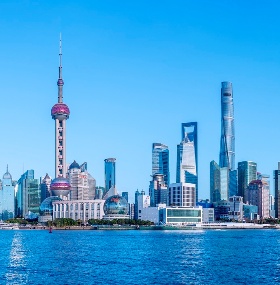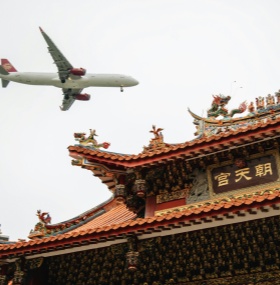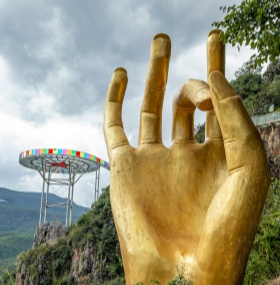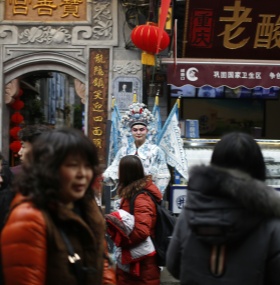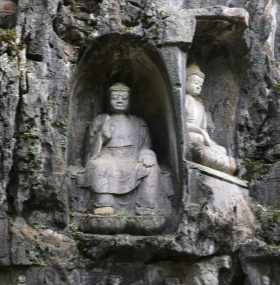Travel photography is more than just snapping pictures; it’s about encapsulating the essence of your adventure—whether it’s the rich culture, awe-inspiring landscapes, or the unique people you meet. To help you capture those unforgettable moments, here are some essential tips for travel photographers, from timing your shots to choosing the right equipment and composing stunning images.
1. Mastering Light: Best Times for Capturing Breathtaking Photos
One of the most important aspects of travel photography is understanding and using light to your advantage. Lighting can make or break a photo, and knowing when to shoot is key to getting those perfect shots.
Golden Hour: The period shortly after sunrise and just before sunset offers soft, warm lighting that creates long shadows and adds depth to your photos. The golden hour is ideal for landscapes, portraits, and cityscapes, as it gives everything a magical glow.
Tip: Be prepared to arrive early for sunrise or stay late for sunset. Use apps like Sun Seeker or Golden Hour to plan your shoots around these golden moments.
Blue Hour: The time right after sunset or just before sunrise is known as the blue hour. During this period, the sky takes on a deep blue hue, and artificial lights from the city or landmarks begin to shine. This is a fantastic time for shooting urban scenes or night photography.
Tip: Keep your ISO low (100-400) to avoid noise, and use a tripod for stability, as the light levels will be lower.
Midday Light: While midday light can be harsh, it's still possible to work with it by looking for shaded spots or using diffusers. Strong shadows and bright sunlight can highlight texture and details, making it ideal for capturing intricate patterns and architectural features.
Tip: If you’re shooting portraits during midday, try to find some shade or use a reflector to soften the harsh sunlight on your subject.
2. Telling Stories Through People and Culture
Capturing the essence of a place often involves photographing its people. From vibrant street scenes to intimate portraits, human subjects help tell the story of a destination. Here’s how to photograph people and cultures respectfully and effectively:
Engage with Locals: Before taking photos of people, especially in more traditional or remote areas, make sure to engage with them. Ask for permission and be respectful of their customs. A friendly exchange can make your subjects more comfortable and result in a more authentic shot.
Candid Moments: While posed portraits are beautiful, candid shots often capture the true essence of a culture. Focus on authentic moments, like someone cooking in a market, children playing, or local artisans working. These images tell a deeper story.
Tip: To take candid photos, blend in with your surroundings and let the action unfold naturally. If you're shooting street scenes, try using a long lens to keep your distance and avoid intruding on people's personal space.
Respect Cultural Sensitivities: Each culture has its own set of rules regarding photography. In some places, it’s considered disrespectful to take photos of sacred sites or during certain rituals. Always do your research beforehand to avoid causing offense.
3. Lens and Gear Selection: Getting the Right Equipment for the Job
Selecting the right camera gear for your travels is essential for capturing high-quality images. While you don’t need an arsenal of lenses, a few versatile pieces of equipment will help you achieve a range of shots.
Wide-Angle Lens (16-35mm): A wide-angle lens is perfect for sweeping landscapes, architecture, and cityscapes. It allows you to capture large scenes in a single shot, making it ideal for expansive views like mountain ranges, deserts, or bustling city streets.
Tip: Avoid getting too close to your subject with a wide-angle lens, as it can distort proportions, especially with people or tall buildings.
Zoom Lens (24-70mm or 18-105mm): A standard zoom lens is perfect for everyday shooting. Whether you’re capturing a market scene or an iconic landmark, a zoom lens offers versatility and flexibility.
Tip: If you’re shooting a variety of subjects (landscapes, people, architecture) and don’t want to carry multiple lenses, a zoom lens is the best option.
Telephoto Lens (70-200mm): For wildlife photography or distant subjects, a telephoto lens allows you to capture details from afar. Whether it’s a bird perched on a branch or a monument in the distance, this lens gives you the flexibility to shoot without disturbing the scene.
Tip: Use a tripod or monopod for stability when shooting with a telephoto lens, especially in lower light conditions.
Prime Lens (50mm f/1.8): A 50mm prime lens offers excellent image quality with a wide aperture, making it ideal for portraits and low-light situations. The wide aperture also helps create beautiful background blur (bokeh), which is perfect for isolating your subject.
Tip: A 50mm prime lens is lightweight and compact, making it an excellent choice for travel photographers who prefer minimal gear.
4. Composition Tips: Framing Your Shots for Impact
Strong composition is essential to creating visually engaging travel photos. The way you frame your shots will help guide the viewer’s eye and communicate the story of the scene.
Rule of Thirds: Divide your frame into nine equal parts using two horizontal and two vertical lines. Position your subject along these lines or at their intersections for a balanced and dynamic composition.
Tip: Use this rule to place important elements like the horizon, a person, or a monument off-center, allowing other elements to fill the space and create visual interest.
Leading Lines: Use natural lines, such as roads, rivers, or architecture, to lead the viewer's eye toward the subject. This technique adds depth to your photos and can make even simple scenes appear more dynamic.
Tip: Experiment with different angles to find lines that converge toward your subject. A long road leading into the distance or a river winding through a landscape can create powerful compositions.
Framing: Use natural or architectural elements to frame your subject. This could be a doorway, archway, or window that directs attention to the main subject of your shot.
Tip: Framing helps create a sense of context in your photos, adding a layer of depth and drawing the viewer’s focus to the subject.
Symmetry and Patterns: Many cultural and architectural elements feature symmetrical designs or repeating patterns. These elements can create harmony and balance in your photos.
Tip: Look for symmetry in buildings, bridges, or even nature. The repetition of shapes and patterns can add a visually pleasing quality to your images.
5. Editing Your Travel Photos: Enhancing Your Images in Post-Processing
Post-processing is the final step in bringing your photos to life. While it’s important to get the shot right in-camera, editing can help refine your images and make them more impactful.
Adjust Exposure: Fine-tune the exposure to ensure your photo is neither too bright nor too dark. Use the highlights and shadows sliders to recover details in both light and dark areas.
Enhance Colors: Boost the vibrancy or saturation slightly to make colors pop, especially in nature shots or street scenes. However, be careful not to overdo it, as unnatural colors can make your photos look less authentic.
Sharpening: Apply a bit of sharpening to your photos to bring out the details, especially in landscapes or architectural shots. Avoid excessive sharpening, as it can introduce noise.
Crop for Better Composition: Don’t be afraid to crop your images to improve composition. Remove distractions from the edges or straighten crooked horizons to create a more polished look.
6. Must-Have Travel Photography Gear
Packing the right gear ensures you’re ready to capture every moment. Here’s what every travel photographer should consider bringing:
Camera Body: A DSLR or mirrorless camera with manual controls is essential for flexibility and creativity.
Lenses: A wide-angle lens, zoom lens, and prime lens for various types of shots.
Tripod: Essential for low-light photography or long exposure shots, especially during the blue hour.
Extra Batteries and Memory Cards: Ensure you don’t miss any important shots by having plenty of backup batteries and memory cards.
Camera Bag: A comfortable, durable bag to carry and protect your gear during your travels.
Related Posts
Create Your Customized Trip
Take about 2 minutes to fill the form to tell us how you like to travel, and get a reply within 1 working day.

